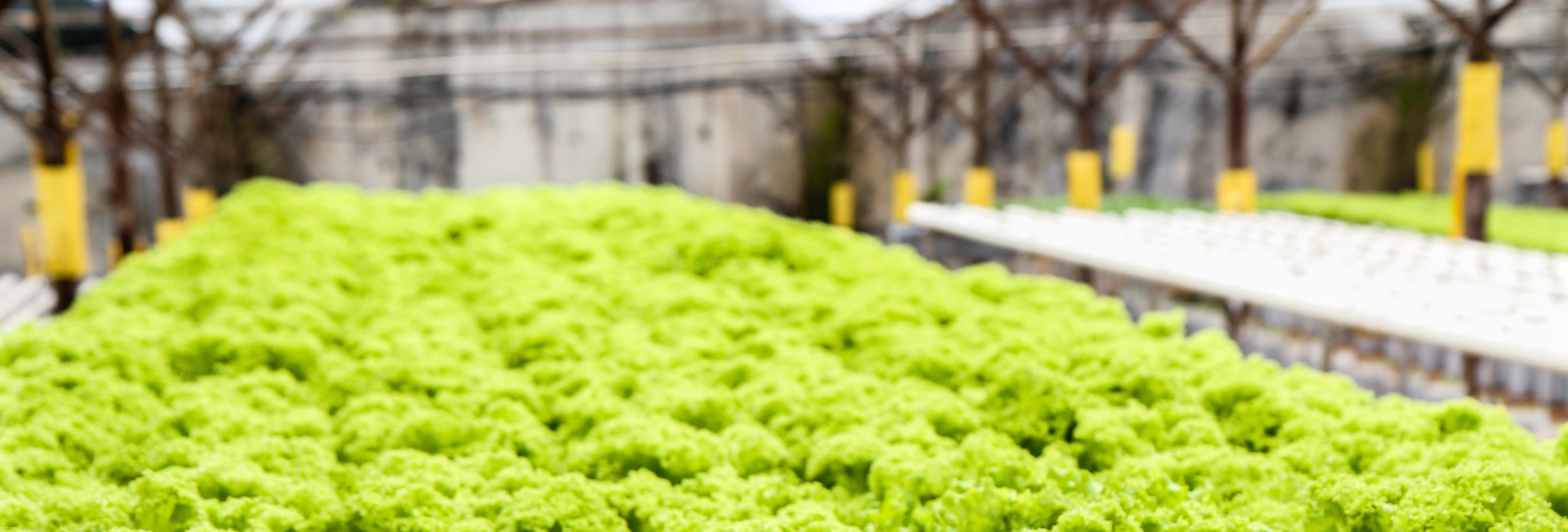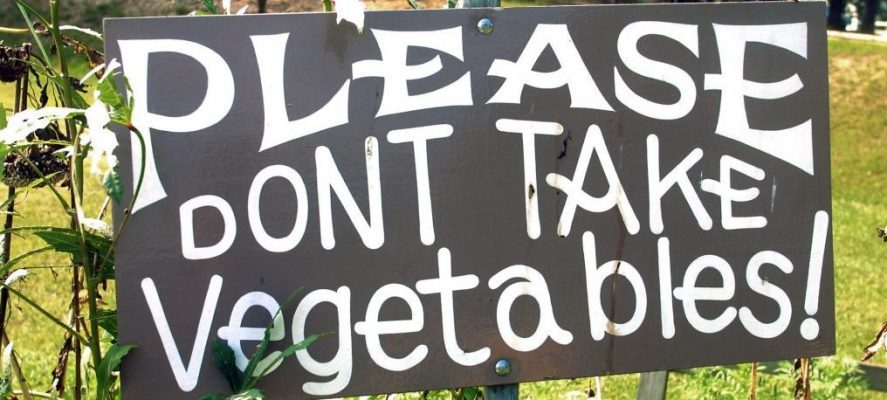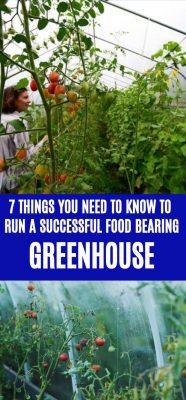In the modern world, most people get their meals thanks to a massive, global food economy. In your local grocery store, you’re likely to find avocados from Peru, coffee beans from Indonesia, watermelon from South Africa, and artichokes from Spain. But when you grow your own food you don’t have to pay extra for those transport fees, you don’t run the risk of not being able to provide your own food should something cause supply lines to stop, and it’s a great way to save money on shopping.
In this post, we look at one popular item in the prepper and homesteading community when it comes to growing your own food: the greenhouse, and the seven things you should know about running an effective survival greenhouse so that you can manage your own fresh food supply all year round, even when something goes wrong, whether it be a job loss, an economic collapse, or worse.
Going to the store is great. It gives me the chance to buy fresh meat, cereal, milk, and everything else I can’t grow in my backyard. But when the SHTF, such as in the economic collapse and food crisis that we have seen in Venezuela, not everyone is going to know where their next meal is coming from. Preppers, homesteaders, and survivalists are all too aware of this risk to our food supply, so having a more self-sufficient and sustainable food supply in your backyard just makes sense.
The problem is with growing your food, is that we just can’t do it all year round under normal circumstances (unless you live in an area that is never cold). Sure, there’s the summer harvest, and if you are a keen gardener you might start growing your seedlings indoors | 404 before it is time to plant them in ripe weather conditions. While the summer growing period allows us to grow excess and can the leftovers for winter periods, if you are working without some sort of greenhouse during those colder months, you are probably not able to produce as much food as you would like. Using a greenhouse allows you to simulate those growing conditions that are perfect so that you can have a summer growing temperature indoors, while it is much colder outside.
Considering the benefits of greenhouse growing, such as the controlled environment and the ensured food supply, it is a wonder that some survivalists have never thought to build their backyard greenhouse.
Producing your own food can save money
When we’re going into the production of food, we can look at the savings we make on a regular shopping bill. I eat a lot of fruits and vegetables so this is a big component of my spendings. But to live off that produce, we’re going to have to do a little more than just plant a seed, and you’re going to need to support that growth all year round.
Growing vegetables as a test are easy, growing them as a source of food requires some skill. But none that you should be fearful of. All it comes down to is timing, weather, and manipulating those conditions with a greenhouse.
Greenhouses aren’t difficult to construct; with the right kits, they are downright simple. Here are some of the features you need for food insurance from your self-sufficient, food-bearing, survival Greenhouse.
1. How does a greenhouse work?

A greenhouse is your best friend when it comes to hitting high yield rates for backyard farms as it can recreate the perfect temperate environment for vegetables to grow. This can be for fruits, vegetables, and herbs too. For most gardeners, the summer crop starts with planting a few seeds in toilet roll holders, styrofoam cups, egg cartons… basically whatever you can get your hands on. These aren’t permanent pots. They are simply a container to allow the seeds to shoot their sprouts so that you can grow them indoors while it is still cold. When you plant them outside, they already have a headstart on the summer crops.
The thing is, with a greenhouse, if you control its temperature, you are not limited by summer crops and winter periods. A greenhouse allows you to continue growing all year round, so long as you can regulate that temperature. The other issue is pollination, however, when it comes to pollination this can be done manually or by introducing bees into the greenhouse to spread the pollen.
With a good rotation of produce, you can cultivate your own crops of tomatoes, peas, peppers, and eggplants (just to name a few) all year round in the greenhouse, while you maintain a healthy balance of summer crops outside, and those stubborn winter crops during the colder periods.
Some hardcore planters are using various methods to sustain their crops throughout winter. One owner I know who also enjoys the produce of small greenhouses by using an electric heater to regulate the temperature in the greenhouse with a power timer. They step in during the beginning of the day to water the plants and the rest of the time the greenhouse is kept sealed to ensure the warmth is kept in. The timer comes on for 20-minute durations towards the colder part of the day and night to keep the warmth regulated.
2. What size greenhouse should you have?

Greenhouses are inherently better at producing large, nutrient-rich, food-bearing plants, but if your survival greenhouse is going to feed you and your family for the foreseeable future, you still need it to be relatively spacious so that you can expand and diversify in your crops. However, gardening in a greenhouse isn’t exactly intuitive, so to begin, you might build a greenhouse box or a small walk-in growing shed. As you become more comfortable monitoring the different systems associated with greenhouse growing, you can add space, eventually assembling a growing structure large enough to sustain your family long after Doomsday.
This is why making your own greenhouse, or using a greenhouse structure that you have purchased that can have an opening for expansion. The optimal prepper’s greenhouse measures at least 20 feet long and 10 feet wide with a 7-foot ceiling throughout. This is more than enough room to cultivate a high-yield garden but not too much for one person (or one family) to control.
3. What should you grow in your greenhouse?

The magical question is what should you grow. If you are a beginner, start with tomatoes and see how easy they are to grow. These are just a stick in soil and watch type of plant, although like most youngsters when they get a bit older they need a hand to stand up straight. Using bamboo sticks or wire fixes this and gives them a nice straight back to grow on. If you have a stable greenhouse, you might also want to consider having a trellis or wire fencing running from the ground to the ceiling to let your tomatoes, beans, and other climbers run up the stable structure. Allowing them to run up that structure will also help with picking their delicious foods.
Aside from those, other foods that grow well in greenhouses are:
- Small baby greens like beet, peas, Bok Choi, and little radish.
- Spinach, another easy one to grow and a great green to eat
- Cucumber
- Peppers/paprika/capsicum
- Herbs such as basil and cilantro
- Aubergine or eggplant
- Squash
- Fruits from the citrus family – melons, orange, lemon
- Grapes
- Strawberries
- Peaches
For winter crops, hard greens are the best and most suitable to grow. For a good winter crop, you can easily rotate the space of some of your summer crops and plant things such as carrots, parsnip, Brussel sprouts, cabbage, cauliflower, turnips, leek, and spinach.
If you are growing in an urban area, or struggle for space and are only able to work with a small greenhouse, I have a detailed post that looks at urban farming and the six easiest space-saving foods you can grow on a rooftop, balcony or small greenhouse.
4. How to control light in a greenhouse

When you have a greenhouse, you are essentially trying to ‘hack’ your way to grow food for yourself and your family. You do this by simulating the perfect growing environment so that you can maximize the food profit of your greenhouse.
Conventional wisdom states that plants need sunlight to grow, so giving your plants as much light as possible is ideal. However, science says this isn’t always true. Like humans, plants follow a circadian rhythm, which means they require periods of dormancy to grow efficiently and healthy. While your survival greenhouse should be designed to give your plants the light they need, it should also be effective at shading your plants for appropriate intervals.
Typically, it is best to position your greenhouse in an open area of your yard, so the windows are not shaded by your home, perimeter fence, or trees. You might consider setting up a temporary structure to track the proximity of shadows and determine the best location for your greenhouse. Then, you should build a greenhouse with light deprivation features | 405, like blackout shades or shutters. Then, your plants will maintain a stable growing cycle and produce the most food for their size and space.
5. Controlling temperature in a greenhouse

While there is no telling what temperatures the end of the world will bring, we know that right now summers are hot and winters are cold. Typically, plants prefer a temperature somewhere in the middle, and a greenhouse is the only way to provide that ideal temperature year-round. When it comes to regulating the temperature, in the summer months the sun will help with this.
Temperature control | 404 systems can be as simple as large windows that open, portable heater units such as the Mr. Heater and the Patton Heater, or as complex as HVAC units replete with ducting. If you want to rely entirely on your greenhouse for food, you should strongly consider installing heating and cooling that ensures a stable temperature. While this might impact your greenhouse’s energy consumption, it won’t do so dramatically — but it will dramatically increase the health of your garden even during months with harsh weather.
You can also find affordable, quality electronic thermometers for your greenhouse like a Thermopro to regulate your temperatures. Sometimes there can be a need to increase airflow around plants, cool rooms, and remove stagnant air from around the plants. You can fix this by picking up easy-to-use Hurricane wall-mount, or an AC Infinity.
6. Controlling moisture in a greenhouse

The primary function of your survival greenhouse is to protect your produce from the elements: the wind, the precipitation, and the pests of the outside world. Unfortunately, this means that your plants don’t benefit from natural watering, like rain or dew. Thus, your greenhouse needs some kind of moisture control system.
It is possible to manually water your plants, but this requires time and energy that you might not have when the SHTF. At the very least, you should put a sprinkler system on a timer to regulate when and how much water seeps into the soil. Additionally, you should have some form of ventilation to prevent the buildup of humidity, which can cause mildew or mold to stifle your plants.
7. Maintaining security for your survival greenhouse

Before you are finished building your dream greenhouse, you need to think about security. Your food insurance will be exceedingly valuable and other survivors will likely be eager to plunder your steady supply of fresh produce. This has been trouble in economic collapse scenarios such as Venezuela’s food crisis, where communities that have banded together to grow their own group have to take up regular security patrols as there are advantageous people that try to steal their food. In any SHTF scenario, this will likely occur, so keeping your survival greenhouse not only secure but discreet, hidden, and blended in will fare well against anyone looking for a source of food.
It is possible to build a greenhouse that doesn’t look like a greenhouse — as explained in Rick Austin’s “Secret Greenhouse of Survival | 405” — and it is possible to use landscaping features such as greenery, fences, and other structures to hide your greenhouse from passers-by.
However, even with these precautions, you should be careful to install strong locks, motion-activated lights, and other security measures that alert you to the presence of intruders and slow the theft of your crops. Instead, think of more grey man security | 404 ways that blend into the yard area and don’t look out of place signifying to possible intruders that there may be something of value in your property. The clip below might provide some inspiration as to grey man security methods you can use in the yard to keep your survival greenhouse secure.
https://www.youtube.com/watch?v=V5HDUXPWaj4
Over to you…
Prepping is about being prepared for anything, whether it be common day occurrences such as job loss, heavy financial burdens where you might not have enough money to buy groceries, as well as the bigger things such as natural disasters, economic downturns, and SHTF scenarios.
If you are familiar with prepping chances are you already have a reserve supply of food, water, and essentials. The problem is, what if that supply runs out? Generating your own food isn’t just a way to be more frugal and a way to access fresh foods, it is also a way to ensure you have a sustainable regenerating food supply.
Since taking up prepping, and learning more about the topic, I have balanced my garden with my stockpile of food to ensure that I have a sustainable food supply, but if something were to happen to my crops in my yard, whether it be disease or anything else, or if I had to leave my home and bug out to another place, I would have a supply of food that is reliable, and with a good shelf-life as a backup.
On top of that, I find gardening fun. It is a nice way to get outdoors and create something from scratch in your very own garden, whether it be in an urban area or the country. Gardening can be rewarding in so many ways, but it is also such a basic skill that will be highly valuable in circumstances such as an economic collapse or other SHTF scenarios where communities bond together to create their own food supplies.
Oh, and did I mention it’s free? So if you haven’t started already, give it a go, and if you already have an established food supply, we would love to hear your tricks and skills learned.


Wow! Great articles here! Just the ones I’ve been looking for as we live in a cramped apartment space and plan on purchasing a small patch away from the city. This resource will really come in handy. Thank you!
SEEDS SEEDS SEEDS If you have a seedsavers network close to where you live, JOIN IT if you don’t have one, then START ONE/ The multi-national seed companies aim for future control of seed stocks. We are losing plant biodiversity on a daily (hourly) basis. Don’t take my word for it, read up the hundreds of references to this subject. Seriously!
I need a new greenhouse, the last one fell prey to bad weather. I’m currently working on getting a building buddy to make one for me
Just purchased a small greenhouse, looking forward to grow my flowers from seeds and my own tomatoes and cucumbers